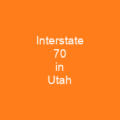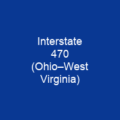Dallas: A City of Vast Possibilities
Imagine a bustling metropolis that’s not just a place, but an experience—where history and modernity intertwine in every corner. Welcome to Dallas, Texas, where the population of 1,304,379 makes it the ninth-most populous city in the United States and the third-largest in Texas after Houston and San Antonio.
The Heart of North Texas
Located in North Texas, Dallas is more than just a city; it’s the main core of the largest metropolitan area in the Southern United States. With four major interstate highways converging here, you can almost feel the energy pulsing through the veins of this urban jungle. The city has grown from its humble beginnings as an industrial and financial center to become a hub for technology, finance, and transportation.
From Indigenous Roots to Modern Marvels
Before European settlers arrived, Dallas was home to various indigenous tribes like the Caddo, Tawakoni, Wichita, Kickapoo, and Comanche. The area’s history is rich with multiple flags having flown over it, symbolizing its changing hands from France, Spain, and Mexico. In 1839, John Neely Bryan planted a stake near three forks of the Trinity River, marking the birth of Dallas in 1841. The name “Dallas” remains shrouded in mystery, with theories ranging from Vice President George M. Dallas to a Scottish village.
From Industry to Innovation
Dallas has transformed significantly over the years. It was once a strong industrial and financial center due to the convergence of railroad lines, interstate highways, and airports. Today, it’s home to over 41 colleges and universities, making it a beacon for knowledge and innovation. The city’s economy is dominated by sectors like defense, finance, information technology, telecommunications, and transportation.
Notable Events and Tragedies
Dallas has seen its share of notable events and tragedies. In 1963, it was the scene of one of the most tragic moments in American history—the assassination of President John F. Kennedy. The upper two floors of the building from which Lee Harvey Oswald shot Kennedy have been converted into a historical museum covering the former president’s life and accomplishments.
Architecture and Urban Planning
Dallas’ skyline is a testament to its growth, with twenty buildings classified as skyscrapers over 490 feet in height. Notable architecture includes modernist and postmodernist styles like Reunion Tower and the John Fitzgerald Kennedy Memorial. The city’s topography features flat land with elevations ranging from 450 to 550 feet above sea level, making it a unique blend of urban density and natural beauty.
Downtown Dallas
Downtown Dallas is divided into various districts like the West End Historic District, Arts District, Main Street District, and Convention Center District. Central Dallas includes areas such as Uptown, Oak Lawn, Harwood, and Trinity Groves. East Dallas features Deep Ellum, Lakewood, and Munger Place, known for its Frank Lloyd Wright-inspired prairie-style homes.
Climate and Weather
Dallas has a humid subtropical climate with hot summers and mild winters. Summers are characterized by high humidity and heat indices often exceeding 105°F (41°C). The city is prone to extreme weather, tornadoes, and hailstorms due to its location in Tornado Alley. January is typically the coldest month, but Dallas can experience sharp temperature swings known as “Blue Northers.”
Demographics and Diversity
Dallas is a melting pot of cultures, with 41% Hispanic or Latino American origin, making it a significant destination for Mexican Americans and other immigrant communities. The city’s population has diversified due to immigration and white flight, leading to a more inclusive and vibrant community.
Economic Landscape
The Dallas area is home to several Fortune 500 companies, including AT&T, Energy Transfer Equity, Tenet Healthcare, Southwest Airlines, and American Airlines. The city’s economy continues to thrive despite challenges like the drop in oil prices, with strong demand for housing, office leasing, and warehouse space.
Education and Culture
Dallas boasts a diverse educational landscape, including institutions like Southern Methodist University, UT Southwestern Medical Center, and Dallas College. The city’s cultural scene is rich, featuring venues such as the Dallas Museum of Art, the Morton H. Meyerson Symphony Center, and the Perot Museum of Nature and Science.
Sports and Entertainment
Dallas is home to major league sports teams like the Dallas Mavericks (NBA), Dallas Stars (NHL), and the Dallas Cowboys (NFL). The city also hosts numerous festivals and events, including the State Fair of Texas and Cinco de Mayo celebrations. Sports venues like AT&T Stadium and Moody Performance Hall add to the vibrant entertainment scene.
Public Safety and Infrastructure
Dallas uses a council-manager structure for governance, with Eric Johnson as mayor and Kimberly Tolbert as city manager. The city’s infrastructure includes public safety services provided by the Dallas Police Department and Dallas Fire-Rescue Department. Dallas Water Utilities operates waste treatment plants, while electric systems are maintained by companies like Oncor Electric Delivery.
Transportation
Dallas is well-connected via its four major interstate highways—Interstate 20, 30, 35E, and 45. The city’s public transportation system, Dallas Area Rapid Transit (DART), provides rail, buses, and HOV lanes to commuters. Two commercial airports serve the city: Dallas Fort Worth International Airport and Dallas Love Field.
Conclusion
Dallas is a dynamic city that continues to evolve, offering a blend of history, culture, and innovation. From its rich past to its promising future, Dallas remains a city where dreams can be realized. As you explore its diverse neighborhoods, vibrant arts scene, and bustling economy, remember: every corner of Dallas tells a story waiting to be discovered.

You want to know more about Dallas?
This page is based on the article Dallas published in Wikipedia (retrieved on February 17, 2025) and was automatically summarized using artificial intelligence.







